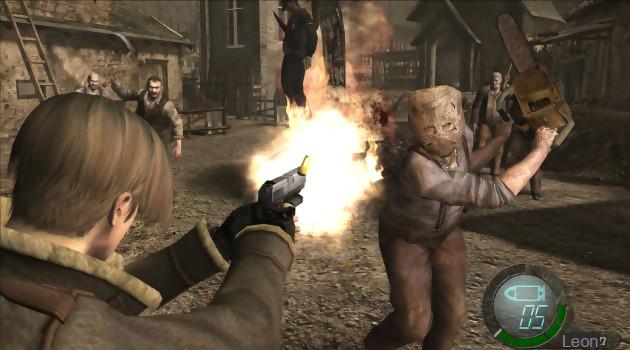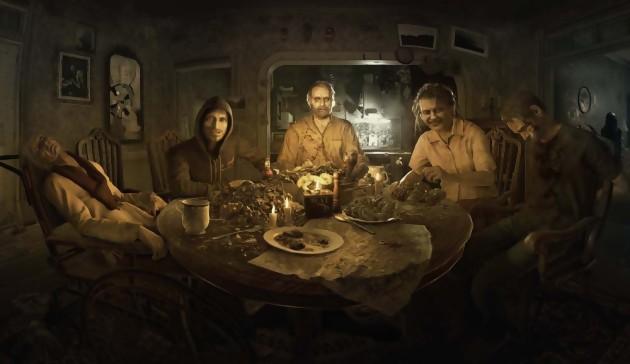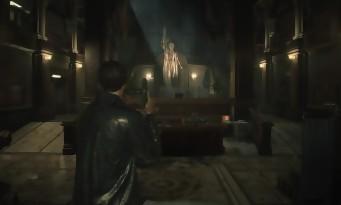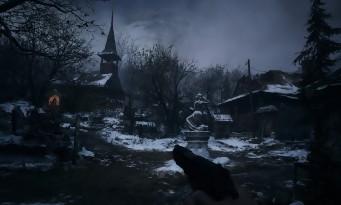 Developed in just one year as a quick follow-up to the huge commercial and critical success of Resident Evil 2, Resident Evil 3 was warmly received when it was released in 1999. Let's not lie: the title is cult for many reasons and yet... it is clearly the last opus of a horror trilogy whose more pronounced action, less turned towards pure horror, will also have aroused the questioning. The famous saga of Capcom, standard-bearer of survival-horror, would it be leaning towards the spectacular? This is a bit of the question we were asking at the time and, indeed, Resident Evil 4 came to confirm this theory a few years later, after a Code Veronica still in the right line. As much to admit it to you immediately: this remake is intended to be quite in the same vein, if not more, and tends to leave visceral fear for a more explosive cocktail.
Developed in just one year as a quick follow-up to the huge commercial and critical success of Resident Evil 2, Resident Evil 3 was warmly received when it was released in 1999. Let's not lie: the title is cult for many reasons and yet... it is clearly the last opus of a horror trilogy whose more pronounced action, less turned towards pure horror, will also have aroused the questioning. The famous saga of Capcom, standard-bearer of survival-horror, would it be leaning towards the spectacular? This is a bit of the question we were asking at the time and, indeed, Resident Evil 4 came to confirm this theory a few years later, after a Code Veronica still in the right line. As much to admit it to you immediately: this remake is intended to be quite in the same vein, if not more, and tends to leave visceral fear for a more explosive cocktail.
THE CRIMSON RIVERS
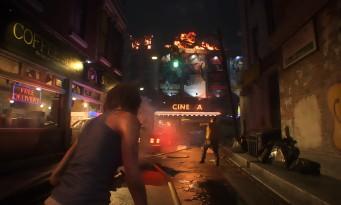 We remember the redesign of Resident Evil 2 for its extraordinary fidelity to the work from which it was inspired: of course, elements of the level design changed here and there to adapt to current codes but, overall, the adventure was very respectful. For Resident Evil 3, and Capcom had announced it, the developers allowed themselves a much greater freedom of reinterpretation. However, the basics still remain unchanged: we embody Jill Valentine, heroine of the founding episode and survivor of the mansion incident, released in a Raccoon City devastated by the painful Virus T a few hours before the journeys of Leon S. Kennedy and Claire Redfield. Pursued by the Nemesis, a biological weapon designed by Umbrella Corporations whose sole purpose is to eradicate the members of the STARS, our courageous policewoman will therefore have to escape it at all costs and get out of this cursed city: a journey full of pitfalls to through the city center, the sewers and other clandestine places then imposes itself, whose order of environments and their structure sometimes differ greatly from the 1999 title. characters are completely new and then come to bring a certain breath of fresh air: the reuse of the police station, too, was done rather intelligently so as not to step too much on the flowerbeds of the previous game. However, we feel that Capcom has reused a lot of assets - which allows it to release the game as soon as the original title - but we salute the effort of originality, to the detriment of a loyalty revised slightly downwards.
We remember the redesign of Resident Evil 2 for its extraordinary fidelity to the work from which it was inspired: of course, elements of the level design changed here and there to adapt to current codes but, overall, the adventure was very respectful. For Resident Evil 3, and Capcom had announced it, the developers allowed themselves a much greater freedom of reinterpretation. However, the basics still remain unchanged: we embody Jill Valentine, heroine of the founding episode and survivor of the mansion incident, released in a Raccoon City devastated by the painful Virus T a few hours before the journeys of Leon S. Kennedy and Claire Redfield. Pursued by the Nemesis, a biological weapon designed by Umbrella Corporations whose sole purpose is to eradicate the members of the STARS, our courageous policewoman will therefore have to escape it at all costs and get out of this cursed city: a journey full of pitfalls to through the city center, the sewers and other clandestine places then imposes itself, whose order of environments and their structure sometimes differ greatly from the 1999 title. characters are completely new and then come to bring a certain breath of fresh air: the reuse of the police station, too, was done rather intelligently so as not to step too much on the flowerbeds of the previous game. However, we feel that Capcom has reused a lot of assets - which allows it to release the game as soon as the original title - but we salute the effort of originality, to the detriment of a loyalty revised slightly downwards.
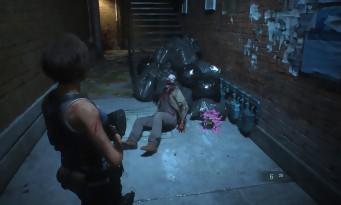 On the other hand, this also translates into greater action and... more linearity. Much less of a headache than Resident Evil 2, the level design still adopts the classic rudiments of the brand but has almost no more puzzles, relies on fewer secrets to unearth and a lighter, more understandable architecture. We are still far from the nag action game in a straight line but it is clear that the fear and stress are less dazzling, despite the omnipresent dismal atmosphere. Survival is always essential and obviously requires the most total exploration, supported by the same ultra-efficient bases, namely a limited inventory but which can expand over the bags unearthed and recovered or a crafting of powders and daggers. herbs to concoct ammunition and health. Overall, the management of resources is a little more permissive, less strict than that of Resident Evil 2 could be and thus puts the player a little more confident. Fortunately, the title is above all not child's play and requires real concentration during its first run, this same certain involvement that characterizes the saga.
On the other hand, this also translates into greater action and... more linearity. Much less of a headache than Resident Evil 2, the level design still adopts the classic rudiments of the brand but has almost no more puzzles, relies on fewer secrets to unearth and a lighter, more understandable architecture. We are still far from the nag action game in a straight line but it is clear that the fear and stress are less dazzling, despite the omnipresent dismal atmosphere. Survival is always essential and obviously requires the most total exploration, supported by the same ultra-efficient bases, namely a limited inventory but which can expand over the bags unearthed and recovered or a crafting of powders and daggers. herbs to concoct ammunition and health. Overall, the management of resources is a little more permissive, less strict than that of Resident Evil 2 could be and thus puts the player a little more confident. Fortunately, the title is above all not child's play and requires real concentration during its first run, this same certain involvement that characterizes the saga.
The speed run possibilities are indeed always present and the replay value is undeniable, so you have to have the will to restart the game to improve yourself again and again.
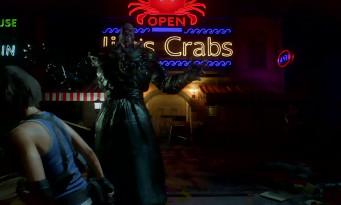 As for the Nemesis, this good old tenacious fellow, his determination to put out your eyes is matched only by that of a licker to crunch the jugular of the first comer: where the terrible Tyrant of Resident Evil 2 could only do use of his fists, this “new” antagonist is even smarter, able to use firearms and move in tighter environments. Overall, his AI is more or less the same as that of Mr. X, being in the most total aggressiveness by tracking you through many levels. On the other hand, many of its passages are scripted and, in the end, its hunt after Jill in the more open environments, in real time, is done… quite rare! Its equivalent in Resident Evil 2 was, in our opinion, more subtle and more oppressive: the Nemesis will still give you a hard time, especially through several surprising and exclusive boss phases. Moreover, the bestiary of this Resident Evil 3 is frankly intimidating: zombies (as well as variants) essentially but also the return of spiders, dogs and Hunter Beta or Gamma. However, their dispersion turns out to be quite timid in the levels but still causes effective combat thanks to a particularly well-built gameplay.
As for the Nemesis, this good old tenacious fellow, his determination to put out your eyes is matched only by that of a licker to crunch the jugular of the first comer: where the terrible Tyrant of Resident Evil 2 could only do use of his fists, this “new” antagonist is even smarter, able to use firearms and move in tighter environments. Overall, his AI is more or less the same as that of Mr. X, being in the most total aggressiveness by tracking you through many levels. On the other hand, many of its passages are scripted and, in the end, its hunt after Jill in the more open environments, in real time, is done… quite rare! Its equivalent in Resident Evil 2 was, in our opinion, more subtle and more oppressive: the Nemesis will still give you a hard time, especially through several surprising and exclusive boss phases. Moreover, the bestiary of this Resident Evil 3 is frankly intimidating: zombies (as well as variants) essentially but also the return of spiders, dogs and Hunter Beta or Gamma. However, their dispersion turns out to be quite timid in the levels but still causes effective combat thanks to a particularly well-built gameplay.
RESIDENTS AND CITY
 It must be said that the basics of the camera on the shoulder, established with Resident Evil 4 and perfected over time to find an excellent balance in Resident Evil 2, have the merit of being solid. The rules don't really change here - there was no need to either - except that Jill now has a real dodge system. By pressing the dedicated button at the last moment during an attack, a roll is then allowed to escape the clutches of his opponent, which can even be linked with a very slight bullet time. A rather relevant addition that comes to energize the whole: without that, it always happens to aim (the head) with a realistic aim, the reticle being unstable and widening with each shot. Of course, it is possible to enlarge its range of attacks with new weapons, however quite classic: shotgun, assault rifle, grenade launcher and some types of handguns are to be recovered in the levels, with for some some upgrades to unearth for a better use. For more originality, you will have to complete optional internal challenges to earn points and reinvest them in the shop. Despite everything, it's much less complete than what its big brother could offer last year with its several characters and the guns that were specific to them: yes, we can't help but compare this 2020 version to the 2019... and rightly so.
It must be said that the basics of the camera on the shoulder, established with Resident Evil 4 and perfected over time to find an excellent balance in Resident Evil 2, have the merit of being solid. The rules don't really change here - there was no need to either - except that Jill now has a real dodge system. By pressing the dedicated button at the last moment during an attack, a roll is then allowed to escape the clutches of his opponent, which can even be linked with a very slight bullet time. A rather relevant addition that comes to energize the whole: without that, it always happens to aim (the head) with a realistic aim, the reticle being unstable and widening with each shot. Of course, it is possible to enlarge its range of attacks with new weapons, however quite classic: shotgun, assault rifle, grenade launcher and some types of handguns are to be recovered in the levels, with for some some upgrades to unearth for a better use. For more originality, you will have to complete optional internal challenges to earn points and reinvest them in the shop. Despite everything, it's much less complete than what its big brother could offer last year with its several characters and the guns that were specific to them: yes, we can't help but compare this 2020 version to the 2019... and rightly so.
 In 1999, Resident Evil 3 was also talked about for its reduced lifespan: indeed, for this remake, there is only one playable character for a single campaign. It's much, much lighter than for Leon and Claire, who each had two versions of their own story, not to mention the additional content with Tofu and The 4th Survivor. During our first game in Normal mode, we completed our adventure in six hours (7h54 in total, cutscenes, game over and breaks included)! It's frankly skinny - the original game was too - and quite hard to take if you don't feel like a performer. The speed run possibilities are indeed always present and the replay value is undeniable, so you have to have the will to restart the game to improve yourself again and again. We also note a shop offering balanced upgrades to modulate the experience as well as the Nightmare and Hell difficulties, very spicy: some collectibles are also to be recovered, coming to support the apocalyptic context of Raccon City without deepening a succinct story to rather anecdotal writing. That said, no big surprise on that side, the quality of Resident Evil 3 residing inexorably in its devilishly controlled intensity of action.
In 1999, Resident Evil 3 was also talked about for its reduced lifespan: indeed, for this remake, there is only one playable character for a single campaign. It's much, much lighter than for Leon and Claire, who each had two versions of their own story, not to mention the additional content with Tofu and The 4th Survivor. During our first game in Normal mode, we completed our adventure in six hours (7h54 in total, cutscenes, game over and breaks included)! It's frankly skinny - the original game was too - and quite hard to take if you don't feel like a performer. The speed run possibilities are indeed always present and the replay value is undeniable, so you have to have the will to restart the game to improve yourself again and again. We also note a shop offering balanced upgrades to modulate the experience as well as the Nightmare and Hell difficulties, very spicy: some collectibles are also to be recovered, coming to support the apocalyptic context of Raccon City without deepening a succinct story to rather anecdotal writing. That said, no big surprise on that side, the quality of Resident Evil 3 residing inexorably in its devilishly controlled intensity of action.
The title is not above all child's play and requires real concentration during its first run, this same certain involvement that characterizes the saga.
 And for such sensations, you need, yes, smooth gameplay as previously explained, but also first-rate technique. We can never repeat it enough, but Capcom's engine, the RE Engine, initiated with Resident Evil 7 and used in particular for the sumptuous Devil May Cry 5, is an unnamed wonder that deserves to be applauded with both hands. The 3D models, textures and reflections of substances and other hemoglobin splatters turn out to be remarkable, resulting in awesome light shows. The tool is even flexible enough to display, on PS4 Pro, “4K” / 60 FPS without flinching with many well-maintained particle effects (the bodies of enemies shred, for example, when you shoot them). Only shadows on the board: a slightly more rigid ragdoll and therefore a tad less realistic as well as jerky frames on the distant undead, proving that the display distance still has its limits, at least on home consoles. But it would be ignoring his pleasure to criticize the production, especially since the sound design is still as precise and flashy: Resident Evil 3 is a little gem whose appearance can only considerably enhance the pleasure of the game, no matter how short.
And for such sensations, you need, yes, smooth gameplay as previously explained, but also first-rate technique. We can never repeat it enough, but Capcom's engine, the RE Engine, initiated with Resident Evil 7 and used in particular for the sumptuous Devil May Cry 5, is an unnamed wonder that deserves to be applauded with both hands. The 3D models, textures and reflections of substances and other hemoglobin splatters turn out to be remarkable, resulting in awesome light shows. The tool is even flexible enough to display, on PS4 Pro, “4K” / 60 FPS without flinching with many well-maintained particle effects (the bodies of enemies shred, for example, when you shoot them). Only shadows on the board: a slightly more rigid ragdoll and therefore a tad less realistic as well as jerky frames on the distant undead, proving that the display distance still has its limits, at least on home consoles. But it would be ignoring his pleasure to criticize the production, especially since the sound design is still as precise and flashy: Resident Evil 3 is a little gem whose appearance can only considerably enhance the pleasure of the game, no matter how short.
GRANDPA MAKES RESISTANCE
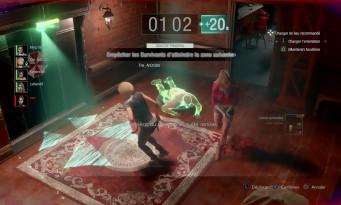 And to overcome the problem of lifespan, Capcom has worked on a completely new multiplayer. Announced even before Resident Evil 3, Resident Evil Resistance was probably planned as a stand-alone before the Japanese preferred to include it in the final game: moreover, this theory is largely reinforced by the distinction between the two projects, each relating to a very distinct application from one another. Thus, REsistance is based on an asymmetrical concept where a player embodies the Mastermind, a cruel thinking head of Umbrella, while four others slip into the skin of young people (among the six offered) prey to the pharmaceutical company. Dropped into one of the five closed maps, they will have to team up to get out by searching the environment and solving puzzles; the Mastermind, he, from his security cameras, will set traps, place enemies strategically (even being able to control some of them) and will persist in putting a spoke in their wheels.
And to overcome the problem of lifespan, Capcom has worked on a completely new multiplayer. Announced even before Resident Evil 3, Resident Evil Resistance was probably planned as a stand-alone before the Japanese preferred to include it in the final game: moreover, this theory is largely reinforced by the distinction between the two projects, each relating to a very distinct application from one another. Thus, REsistance is based on an asymmetrical concept where a player embodies the Mastermind, a cruel thinking head of Umbrella, while four others slip into the skin of young people (among the six offered) prey to the pharmaceutical company. Dropped into one of the five closed maps, they will have to team up to get out by searching the environment and solving puzzles; the Mastermind, he, from his security cameras, will set traps, place enemies strategically (even being able to control some of them) and will persist in putting a spoke in their wheels.
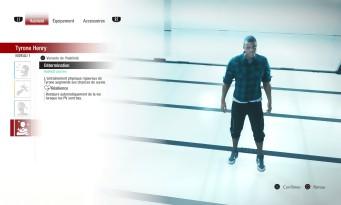 Under very strong slasher movie tunes, we can not blame this REsistance for wanting to shake up the codes of Resident Evil a little. Moreover, the developers have developed a certain depth of play: each "survivor" has several special abilities, themselves based on sub-specialties (which can be unlocked according to the XP levels acquired) which will form obvious complementarity. Thus, by making a non-exhaustive list, Becca may for example have infinite ammunition for a short period of time; Martin will flash his enemies to blind them and place mines; Tyrone will be able to put some good big chased and boost the morale of his teammates; Samuel will use his boxing skills (spoiler: for boxing) while January can disrupt the Mastermind's cameras with an EMP and Valerie will spot valuable items in the levels. In addition, once in play, it will be possible to buy weapons and items thanks to the virtual currency recovered on the spot and upgrade your character over the rounds: the latter must be won in number of three to win the game.
Under very strong slasher movie tunes, we can not blame this REsistance for wanting to shake up the codes of Resident Evil a little. Moreover, the developers have developed a certain depth of play: each "survivor" has several special abilities, themselves based on sub-specialties (which can be unlocked according to the XP levels acquired) which will form obvious complementarity. Thus, by making a non-exhaustive list, Becca may for example have infinite ammunition for a short period of time; Martin will flash his enemies to blind them and place mines; Tyrone will be able to put some good big chased and boost the morale of his teammates; Samuel will use his boxing skills (spoiler: for boxing) while January can disrupt the Mastermind's cameras with an EMP and Valerie will spot valuable items in the levels. In addition, once in play, it will be possible to buy weapons and items thanks to the virtual currency recovered on the spot and upgrade your character over the rounds: the latter must be won in number of three to win the game.
REsistance allows you to breathe and brings out a certain potential, but the tweaking is still necessary to express itself as worthily as in the single-player campaign.
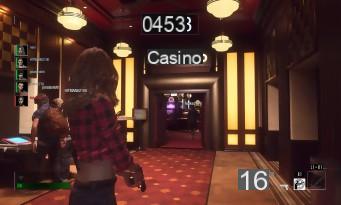 For its part, the Mastermind can also be improved: four men are already available, each with its own specificities and, above all, its “ultimate” enemy that it can deploy on the map. For example, Annette Birkin will send G-Birkin, her husband after mutation that it is possible to meet in Resident Evil 2, Daniel will play the formidable Tyrant, Alex Wesker will have his carnivorous plant Yateveo and Spencer will also have his little surprise. In short, this multiplayer opposes two forces that it is possible to customize in detail and which testify to the goodwill of Capcom. That said, once the controller is in hand, the matter is quite different and it is clear that the TPS formula works less effectively than imagined. Graphically as artistically, the slap is less and the particularly labyrinthine level design causes many camera problems; the animations are rather rigid and do not allow very powerful sensations. Similarly, some clashes are of messy visibility and, fairly quickly, we will have gone around the owner despite evolving maps and rather well thought out. In short, REsistance will occupy its players for a few hours, allows you to breathe and reveals a certain potential, but whose tweaking is still necessary to express itself as worthily as in the single-player campaign. And concerning the latter, there is no denying: Capcom has generally fulfilled its functions.
For its part, the Mastermind can also be improved: four men are already available, each with its own specificities and, above all, its “ultimate” enemy that it can deploy on the map. For example, Annette Birkin will send G-Birkin, her husband after mutation that it is possible to meet in Resident Evil 2, Daniel will play the formidable Tyrant, Alex Wesker will have his carnivorous plant Yateveo and Spencer will also have his little surprise. In short, this multiplayer opposes two forces that it is possible to customize in detail and which testify to the goodwill of Capcom. That said, once the controller is in hand, the matter is quite different and it is clear that the TPS formula works less effectively than imagined. Graphically as artistically, the slap is less and the particularly labyrinthine level design causes many camera problems; the animations are rather rigid and do not allow very powerful sensations. Similarly, some clashes are of messy visibility and, fairly quickly, we will have gone around the owner despite evolving maps and rather well thought out. In short, REsistance will occupy its players for a few hours, allows you to breathe and reveals a certain potential, but whose tweaking is still necessary to express itself as worthily as in the single-player campaign. And concerning the latter, there is no denying: Capcom has generally fulfilled its functions.




